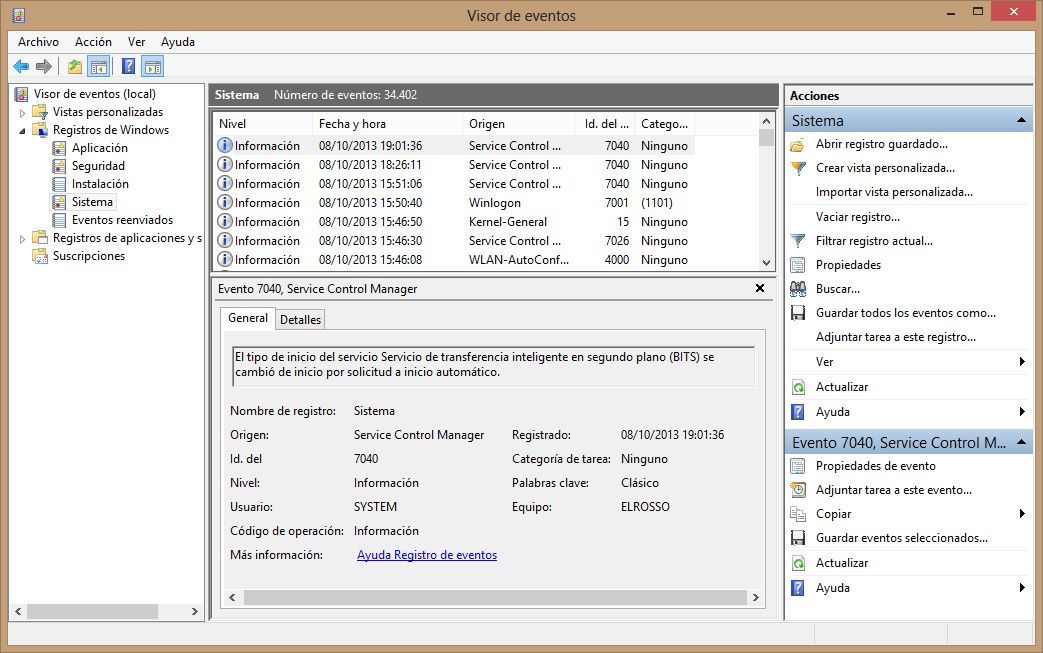Windows has a registry that stores various data related to your computer’s start up and shut down functions—a log of all the sessions in which your PC has run as well as a few details of interest about its activity. Even while it is possible to “manually” access this data, the free tool TurnedOnTimesView greatly simplifies the task for less experienced users.

What it’s for
Analyzing this type of information has two fundamental uses. One of them is controlling usage. Do you want to know how much your computer has been used in your absence or when it was shut down? You can check easily using this tool, which tells you the time of both startup and shutdown and can go as far back in your registry as the date of the computer’s first startup, provided that no one has erased your Windows registry history, something that doesn’t tend to happen magically.
The other use of the program has more to do with resolving malware problems. There are various types of malicious software that can suddenly restart or even shut down your computer. In general, the part of Windows responsible for sending this order is the service Explorer.exe. In the changes log you can see which software element is the one that gave the order, meaning that if it wasn’t the aforementioned operating system service… something’s up.
How it works
TurnedOnTimesView does not require any of those cumbersome installation processes or configuration panels. You download the program, unzip it in a folder, and click on the app. Once it’s started, you’ll see a window like this one:
The data shown are very easy to understand: Time of start up, time of shutdown, session duration, reason for shutdown in case of error, type of shutdown, process that sent the order, and the associated instruction for the type of action. The table is ordered chronologically.
Detecting a possible failure is as easy as analyzing the data. In the example image there is a restart with the code “System Failure” ordered by Winlogon.exe, the Windows component that manages user sessions. If you are continually suffering problems of this sort, you only have to check if the process is genuine or if it’s actually some malicious program that wants to get out.
The manual alternative
As an alternative to TurnedOnTImesView, I’m going to explain the process of manually consulting the system event log. To do this, in Start > Run (or directly on the Metro menu if you’re using Windows 8), you’ll type and run the command eventvwr.msc. From there, on the menu to the left, you’ll access the submenu Windows Register > System, to reach the following window.
Here we have a much more extended log of changes than the one offered by the tool we’ve been discussing: this gives you info about all important system processes that have been run on a certain day. The only problem is that, as we’ve already seen, for the less experienced user this excess of information might just be chaos. For these others, TurnedOnTimesView it is.
Download TurnedOnTimesView on Uptodown
http://turnedontimesview.en.uptodown.com/
Official webpage | http://www.nirsoft.net/utils/computer_turned_on_times.html







